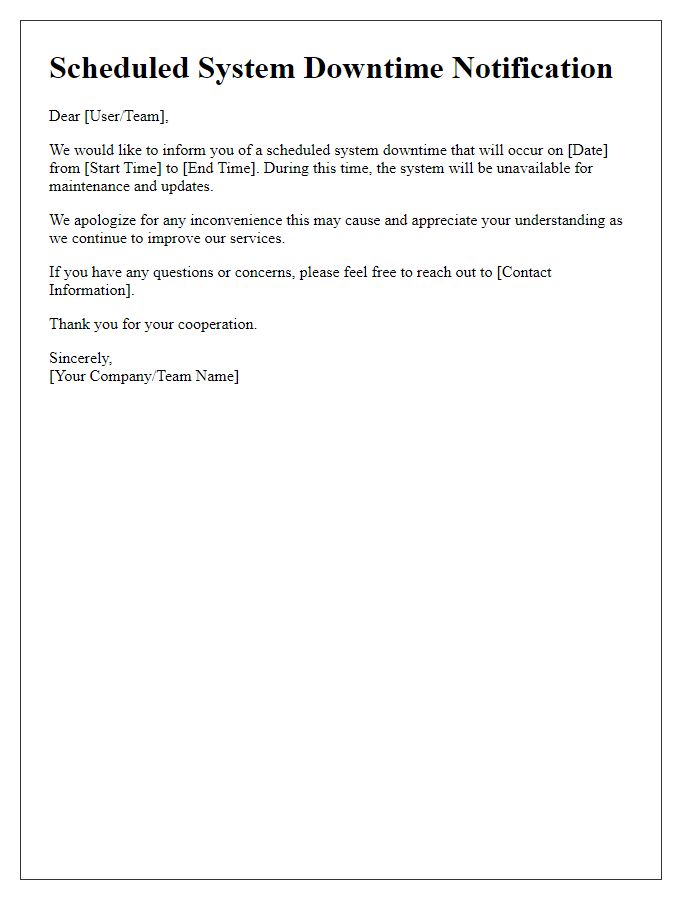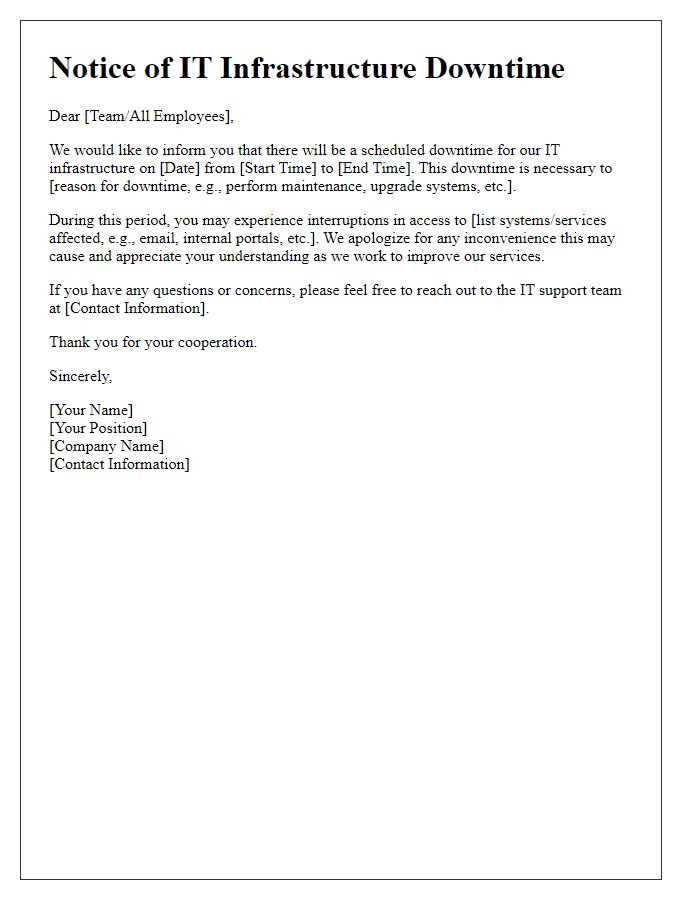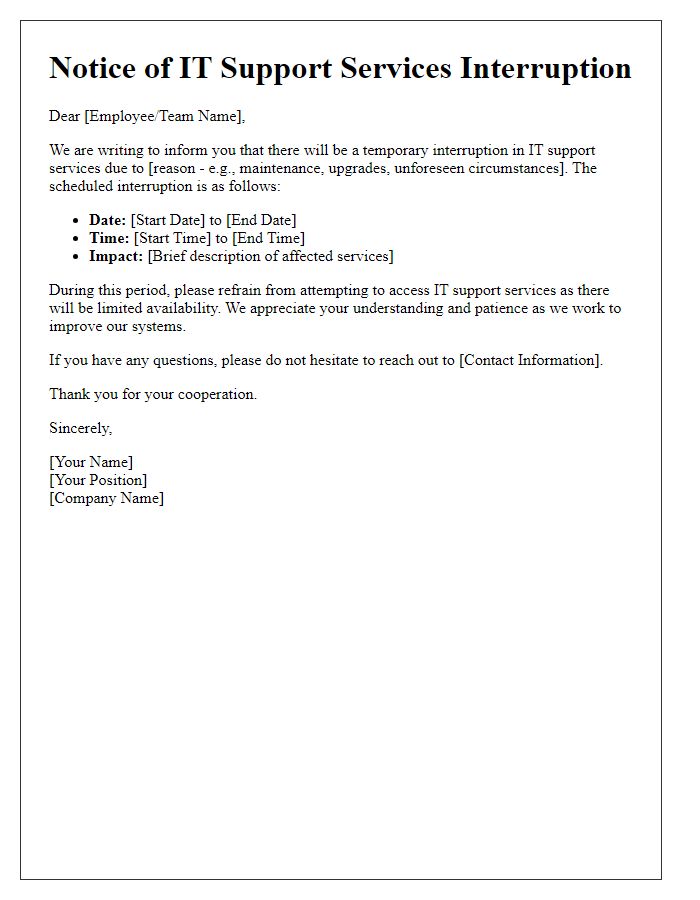In today's fast-paced digital world, unexpected IT system downtime can feel like a major disruption. We understand how crucial it is for your operations to run smoothly, and we empathize with the inconvenience that such interruptions can cause. That's why we're here to keep you informed about any service outages and the steps we are taking to resolve them. Join us as we delve into the details and explore how we can work together to minimize future disruptionsâread on to learn more!

Subject Line Optimization
Subject lines for IT system downtime alerts must convey urgency and clarity. Recommended examples include "Important: Scheduled IT System Downtime Notice on [Date]" or "Alert: Unscheduled IT System Outage Affecting [Service/Region]". Including specifics like "Urgent: Database Access Down for Maintenance - [Date/Time]" or "Critical: Network Service Disruption - Immediate Action Required" enhances the message. Highlighting the impact on users or services, such as "Attention: Email Service Unavailable on [Date]" or "Notice: ERP System Unavailable for Updates - [Date/Time]", aids in communication effectiveness.
Urgency and Impact
An IT system downtime alert communicates critical information regarding service unavailability. Scheduled maintenance (example: server updates) typically occurs during off-peak hours to minimize impact. Unexpected outages, such as incidents involving hardware failure (like hard disk malfunctions) or software bugs (notable in applications like enterprise resource planning, ERP), may result in significant disruptions. Impact assessments indicate potential loss of productivity, with estimated figures reaching hundreds of user hours depending on the size of the organization. Urgency levels vary based on the critical nature of services affected, such as email systems or customer relationship management (CRM) platforms, which are essential for daily operations. Notifications should include timelines for resolution, estimated downtime duration (around 1-4 hours for most cases), and alternative workflows if applicable.
Detailed Downtime Information
Scheduled IT system downtime affects productivity and service availability for users. This period, set for October 15, 2023, from 2:00 AM to 6:00 AM (UTC), is necessary for critical maintenance and updates of servers located at the main data center in New York City. Users may experience disruptions in access to applications such as Customer Relationship Management (CRM) software, email services, and internal communication platforms during this timeframe. The IT department aims to ensure a seamless transition post-maintenance, with expected enhancements in system performance and security measures. Notifications will be sent to users before and after the downtime to provide updates and confirm the resumption of services.
Communication Channels
System downtime in IT environments often leads to significant disruption, affecting users' productivity and operational efficiency. Scheduled maintenance windows, typically held during off-peak hours, are crucial for performing necessary updates, patching vulnerabilities, and implementing security upgrades to critical systems such as servers or databases. Users typically notified via multiple communication channels, including email alerts, intranet announcements, and text messages, to ensure awareness. Downtime impact assessment includes system dependencies, estimating downtime duration, and identifying potential risks, especially in high-availability environments like cloud services or enterprise applications. Ensuring clear communication assists in minimizing confusion and managing user expectations before, during, and after downtime events, thereby facilitating smoother transitions back to regular operations.
Support and Contact Information
System downtime alerts are critical for effective communication during outages. This includes key contact information for IT support teams. For instance, the IT Help Desk can be reached at 1-800-555-0199, available 24/7 for immediate assistance. Email support can be directed to support@company.com, ensuring all inquiries are documented. Additionally, the internal ticketing system (accessible at support.company.com) provides a streamlined method for reporting issues and tracking resolutions. Prompt updates will be communicated via company-wide emails and status dashboards, keeping all stakeholders informed throughout the outage duration. Alerts may also include details about expected resolution timeframes to manage user expectations effectively.













Comments